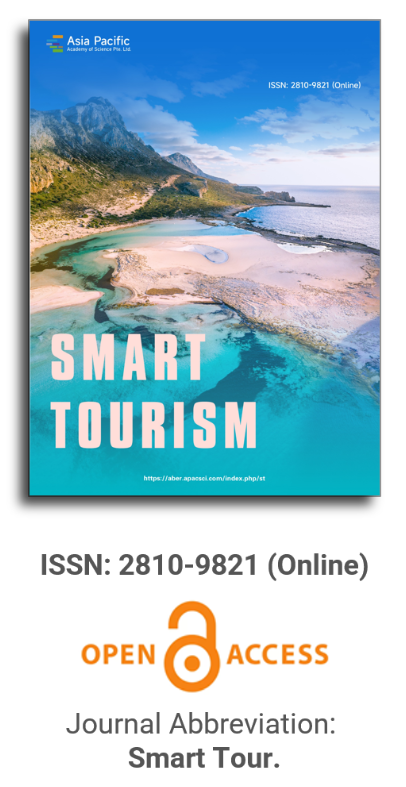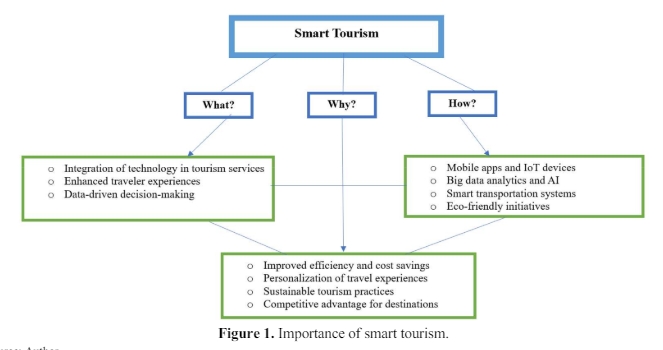


Research on the application behavior of smart tourism of tourists in the context of pandemic prevention and control
Vol 3, Issue 2, 2022
Download PDF
Abstract
The outbreak of the COVID-19 has severely damaged the tourism industry. However, smart tourism has become a new support for the development of the current tourism industry by virtue of its advantages in epidemic prevention and control and tourism format innovation. Tourists are the core of smart tourism services. Therefore, based on UTAUT theory, this paper discusses the application behavior of tourists’ smart tourism during the epidemic. The factors that affect the application willingness of tourists’ smart tourism are perceived security, effort expectation, performance expectation and social impact. The impact of the epidemic has a positive effect on the social impact and performance expectation, which makes more people familiar with, affirm and promote smart tourism, thus enabling the transformation, upgrading and development of the tourism industry, making rational tourism planning.
Keywords
References
- Zhang L, Li N, Liu M. On the basic concept of smarter tourism and its theoretical system. Tourism Tribune 2012; 27(5): 66–73.
- Zhang H, Li L. Intelligent Tourism Management and Practice. China: Beijing Institute of Technology Press; 2017.
- Ning Z, Li J, Chen W. Zhihui lvyou de guanjian shi lvyouzhe yu zhihui yingyong de youxiao xianjie (Chinese) [The key to smart tourism is the effective connection between travelers and smart applications]. China Tourism News, 2019 Sept 10. Available from: http://www.ctnews.com.cn/paper/201909/10/node_ 3.html.
- Viswanath V, Michael MG, Davis GB, et al. User acceptance of information technology: Toward a unified view. MIS Quarterly 2003; 27(3): 425–478.
- Wang S. “Cloud tourism” under the background of COVD-19 pandemic: Reflections and opportunities. Journal of Three Gorges University (Humanities & Social Sciences) 2020; 42(5): 50–53.
- Bauer E, Williams BA, Bosch MW, et al. Differences in microbial activity of digesta from three sections of the porcine large intestine according to. Journal of the Science of Food and Agriculture 2004; 84(15): 2097–2104.
- Kirchhoff BA, Anderson BA, Smith SE, et al. Cognitive training-related changes in hippocampal activity associated with recollection in older adults. Neuro Image 2012; 62(3): 1956–1964.
- Chen J, Zhu X. Research on impacting factors of user behavior of WeChat payment based on UTAUT and ITM. Journal of Modern Information 2015; 35(4): 35–40.
- Wu L. Miandui yiqing lvyou jingqu ying ruhe zijiu (Chinese) In the face of epidemic, tourist attractions should actively save themselves. China Tourism News, 2019 Mar 2. Available from: http://www.ctnews.com.cn/paper/202003/02/node_ 3.html.
- Le Y. Yiqing zhixia de lvyou chanye ruhe zhuanweiweiji (Chinese) [How to turn crisis into opportunity in the tourism industry under the epidemic]. China Business News, 2020 Feb 25. Available from: https://www.yicai.com/epaper/pc/202002/25/node_ A09.html.
- Hair JF, Sarstedt M, Ringle CM, et al. An assessment of the use of partial least squares structural equation modeling in marketing research. Journal of the Academy of Marketing Science 2012; 40(3): 414–433.
Supporting Agencies
Copyright (c) 2022 Wenlong Bian, Lijun Zhou
License URL: https://creativecommons.org/licenses/by/4.0

This site is licensed under a Creative Commons Attribution 4.0 International License (CC BY 4.0).

Prof. Hung-Che Wu
Nanfang College, Guangzhou
China
Indexing & Archiving
Asia Pacific Academy of Science Pte. Ltd. (APACSCI) specializes in international journal publishing. APACSCI adopts the open access publishing model and provides an important communication bridge for academic groups whose interest fields include engineering, technology, medicine, computer, mathematics, agriculture and forestry, and environment.



.jpg)
.jpg)

.jpg)

